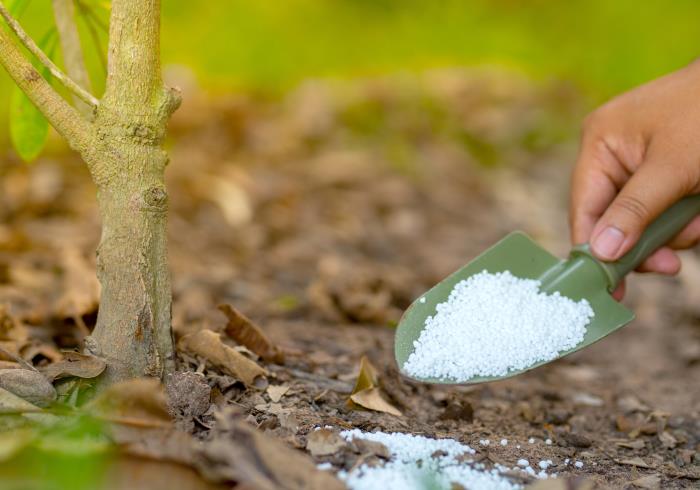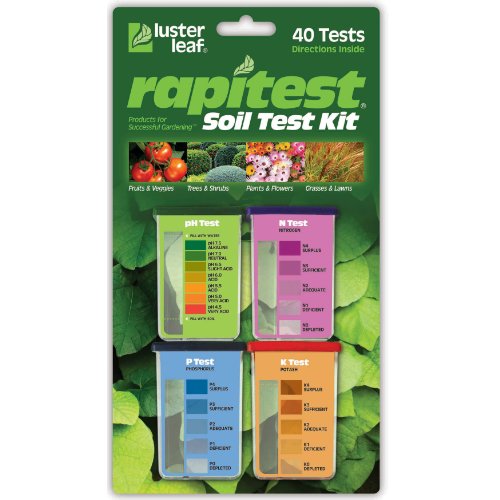The key to strong and healthy plants, flowers, grass, trees, and shrubs is nitrogen, and without this crucial element, your landscaping will suffer.
Luckily, I’m here to explain what nitrogen levels in the soil mean, why and when you should add it, and ways to add nitrogen to the ground naturally.

The correct nitrogen given at the right time will help your lawn and garden flourish, so let’s dive right in!
Nitrogen Levels In Soil
Most soils have some nitrogen, which is naturally put back into the ground through decaying plant matter.
Nitrogen is the number one nutrient plants consume and is the backbone of plant growth. Nitrogen aids in cell wall development that promotes sturdy growth and metabolizes enzymes, nutrients, chlorophyll, and much more.
When nitrogen levels get too high or too low, lawn and garden problems will become evident, so keeping it in balance is essential.
Low Nitrogen Issues
Soil devoid or very low on nitrogen can cause yellow, brown, or bare spots in a lawn or field. In your garden, plants will grow spindly, with small leaves, and may have a limp appearance.
High Nitrogen Issues
Soil with too high nitrogen is hazardous to plants by causing drying or burning of the leaves.
WARNING: Too much nitrogen on vegetables can cause a flurry of growth, and you may think the plant is doing fantastic. Unfortunately, it’ll be too late to save the plant when you realize that excessive nitrogen causes the inability to flower or fruit, leaving you with a lousy harvest.
Nitrogen in high amounts can also leach into waterways, causing environmental damage such as algae blooms or extreme aquatic plant growth that consumes oxygen in the water, choking out fish and other lifeforms.
When Should I Add Nitrogen To My Garden?
Gardeners typically add nitrogen, in the form of a fertilizer, in early spring to their garden. The nitrogen boost will promote vigorous plant or grass development to get your garden filling out nicely.
About 40 parts per million (PPM) of nitrogen in the soil is adequate for healthy plants. Using a soil testing kit is important, so you can add or not add nitrogen to keep levels safe.
Depending on your plant variety, soil type, and weather conditions, you’ll need to reapply nitrogen during the growing season according to their specific nutritional needs.
Fertilizer with nitrogen comes in these forms:
- Organic
- Inorganic
- Dry or granular
- Water-soluble
- Slow-release
Some gardeners, like you’ll see in this video, prefer the direct-to-roots action of water-soluble nitrogen fertilizer during the growing season, while most add granular, slow-release nitrogen into garden soil in the spring.
Organic fertilizers have a plant, or natural, source for the nitrogen. Inorganic nitrogen comes from the chemicals ammonium, nitrate, and nitrite. Plant roots can uptake inorganic nitrogen directly from the soil, while organic nitrogen first needs soil microorganisms to convert the element into a mineral form before root absorption.
Related | Does Fertilizer Expire?
How To Add Nitrogen To Soil Naturally
Eco-friendly gardeners prefer to stick with natural nitrogen sources to increase soil levels but expect the results to take a bit longer than tossing out a high NPK inorganic fertilizer.
Here are the top ways to keep your garden soil in nitrogen harmony:
- Composted Manure – Animal waste is extremely high in nitrogen, but it must go through the composting process to tone down the levels and be safe for your plants. Cow or chicken manure compost is inexpensive and readily available at any garden store.
- Planting Beans or Peas – These crops add or “fix” nitrogen into the soil, so the following crop you grow in the plot will have the nutrients they need.
- Adding Coffee Grounds – Coffee grounds are high in nitrogen, but to see a good increase in soil nitrogen levels, you’ll need to add a lot of them. This method is best for maintaining a small garden bed that has a fair amount of nitrogen already.
- Spread the Clippings – Use a mulching mower without the bag, and let the fresh clippings decay on your lawn for a weekly dose of nitrogen.
- Clean the Fish Tank – Fish waste builds up in tank water and is high in nitrogen, so as long as you haven’t treated your fish with antibiotics, you can pour the water from cleaning on your plants for a nitrogen boost.
- Leave the Leaves – In the fall, mulch planters and garden plots with a two or three-inch layer of leaves and soak them with a hose occasionally. Over the winter months, the leaves will break down and add nitrogen to the soil for your spring plantings.
For more on natural ways to add nitrogen to your garden, check out this video that discusses ways to keep a “nitrogen cycle” going in any garden.
In Summary
Knowing when and how to add nitrogen to soil is another lesson every gardener needs to learn. I hope you use this quick-reference guide to nitrogen for valuable tips to keep your lawn and garden in top condition.
Adding nitrogen to soil can be as easy as using a pre-made fertilizer or going a more natural route using a manure compost or other method. No matter which you choose, your plants will thank you!











